Is it actually worth it to shell out your hard-earned money to buy an expensive wallet, or are you better off going with a cheaper wallet and keeping your change inside? Let’s find out.
Defining Cheap vs. Expensive
So, first off, how do we define “cheap” and “expensive”? That’s relative, and you may have a different definition than we do, but for us, anything under $50 is cheap, and anything above $250 is expensive. Obviously, there are exceptions to the rule because sometimes you get designer wallets, which have a high price tag of $500 to $800, but the quality is more like one of $100. Fortunately, there’s certain hallmarks that will help you to find a wallet that is of higher quality, no matter what the price is.
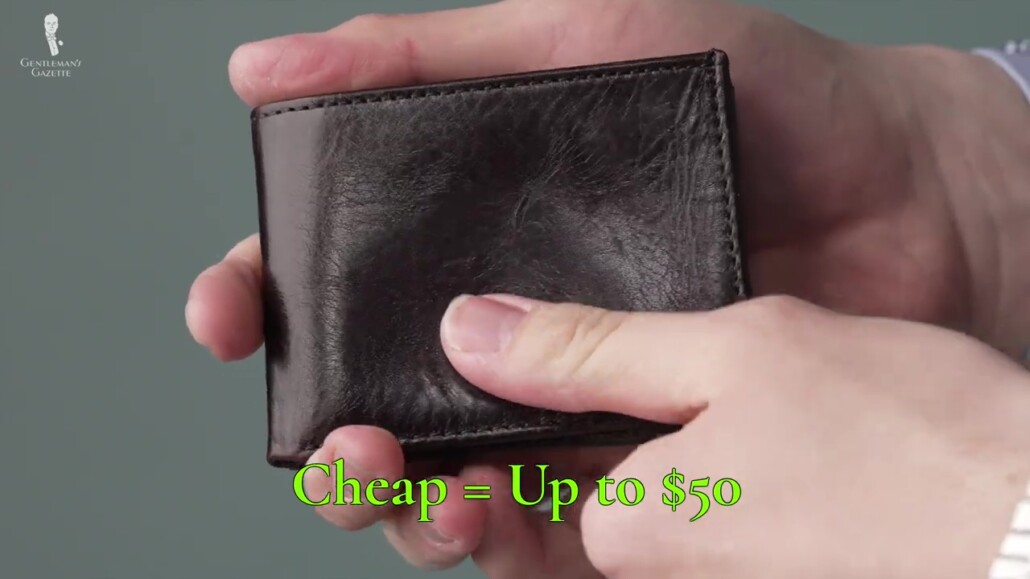
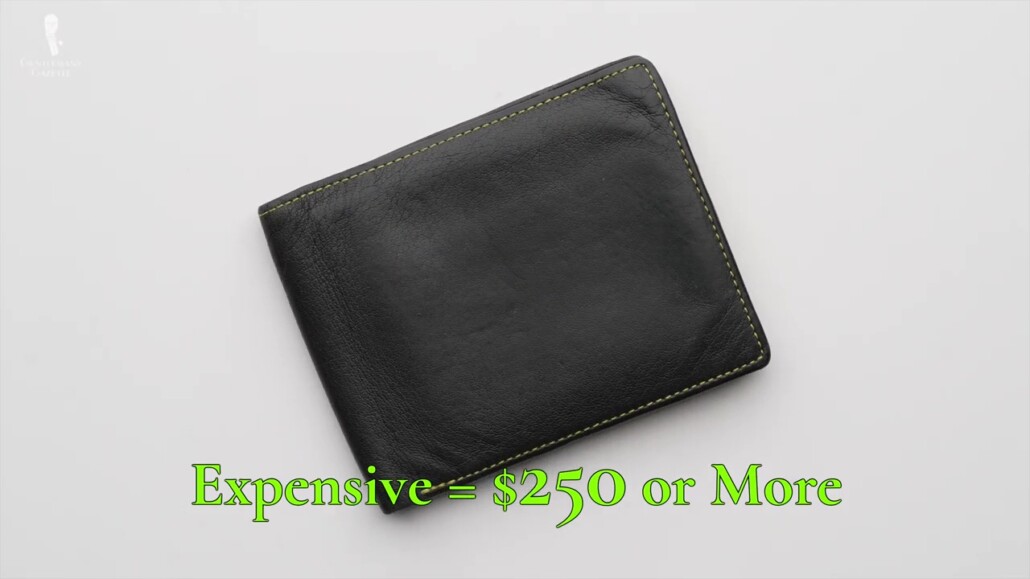
Here, we’re really only discussing leather wallets as that is the prime material for wallets. You can also have canvas wallets or vegan leather wallets, which is not real leather; it’s just a plastic product that sooner or later will end up in a landfill. Actually, it’s sooner than later.
These standards apply to all sorts of wallets—coat wallets, bifold wallets, trifold wallets, card holders, and so forth. Different items have different specialties. For example, a cardholder wallet is meant to be slim, so you want something that’s slim. Would it hold the most cards? No, but that’s not the point. You buy something for what you actually want in terms of functionality and usability.
Cheap vs. Expensive Wallets
1. Material Quality
The first thing that distinguishes cheap wallets from expensive wallets is the materials and the differences in quality. The leather itself is the most important and most expensive ingredient of a leather wallet. So, if you want to make a cheap wallet, you need cheap ingredients.
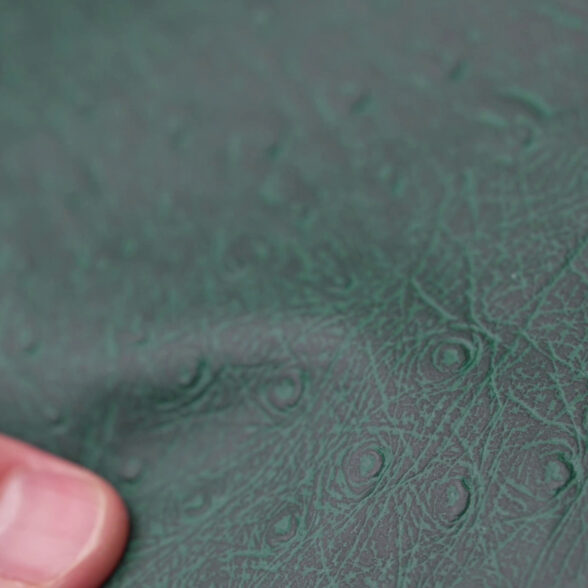
Cheap wallets are typically
Made with cheap materials
If you want a cheaper leather, typically you you get a leather that was tanned in a lower-cost country, made with animals from a lower-cost country. One thing you might see on a cheaper wallet is the stamp “genuine leather.” For the average consumer, that might imply that you actually get real leather rather than fake leather, but in reality, genuine leather is a very low bar to pass.
Typically, it’s produced to a sub-par standard in lower-cost countries. Can you feel and see the difference? Absolutely! If you show me a leather from Morocco, from Mexico, from China, or from India and you show me something from Italy, from France, or from Germany, I can see the difference. The question is: How can you distinguish that? Check out our guide about different types of leather.
Chrome Tanned vs. Vegetable Tanned Leather, Explained
Basically, the first big distinction is where the hide or the skin comes in from. For example, quality leather is typically made from calfskin or bull hide. These bulls for quality leather come from an area where there are not many bug bites, so it could be from the Alps or could be areas in England, for example, where there are not many scars, so you get a nice leather, where you can use the full grain side that is uncorrected; and then finished, which is taned a nice way, all the way through, which is also known as aniline dyed, and it is finished with waxes and oils the way that you want it to be.
Cheap leather, on the other hand, is not the top part of the grain, but it is often a split leather which means the leather is literally cut in half and the bottom layer—which is not as desirable—is then sanded and then finished with a layer of PU coating or something else to make it look nice. But, over time, it won’t wear well, it will age poorly, and it will look terrible.
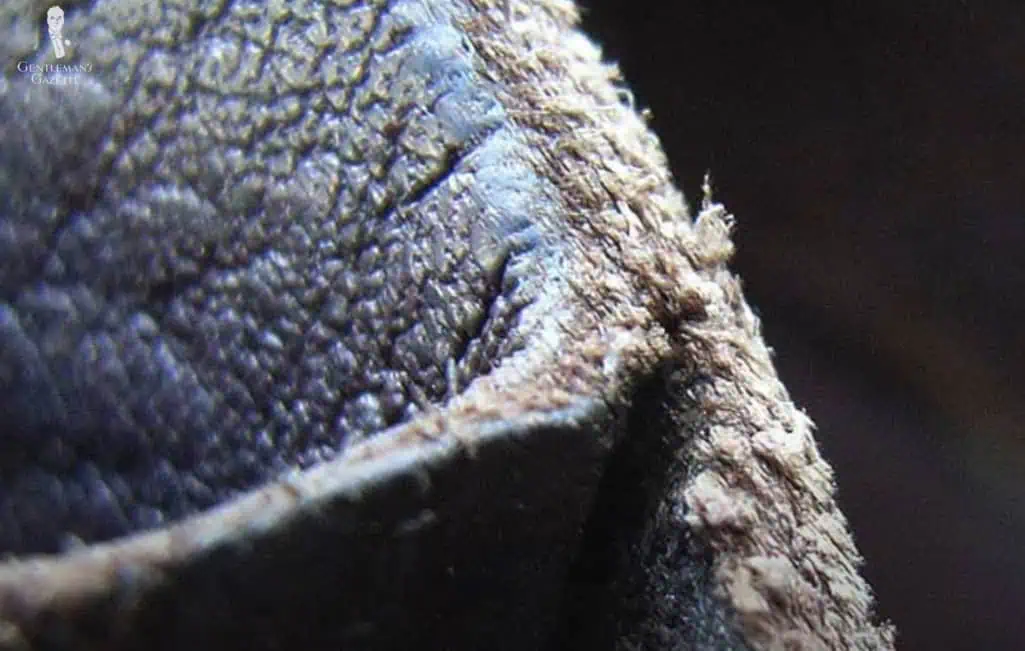
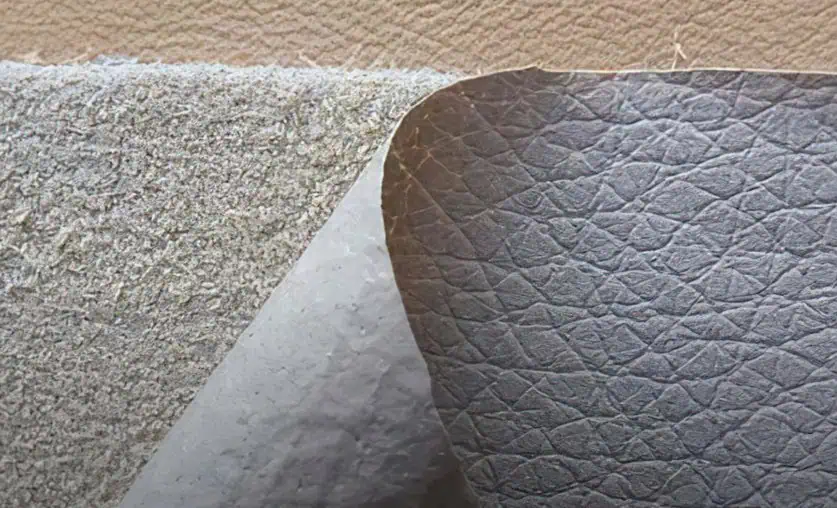
Sometimes, you even have leather fiber materials, where they use leather, and they reconstitute it, and they glue it together in a certain way. This is not something that you want, and no one would ever use that material for quality’s sake. It’s simply because it’s cheap, and you can basically create the impression that it’s a good product when, in reality, it’s garbage. Literally, this is like leather cardboard and chicken nuggets of leather, and I don’t have to tell you that we don’t want that in our wallet.
Sometimes, when you see a grain leather on a cheaper wallet, it’s typically debossed—meaning you use a stamp you grain correct the surface, and then just put the stamp on the leather with some heat and you get that pattern.
On the flip side, an expensive wallet will likely have a grain that is naturally shrunk, so the skin or the hide was naturally untreated, so it’s a full-grain leather. But, then, through the tanning process and the finishing, you can make it shrink and get that effect.
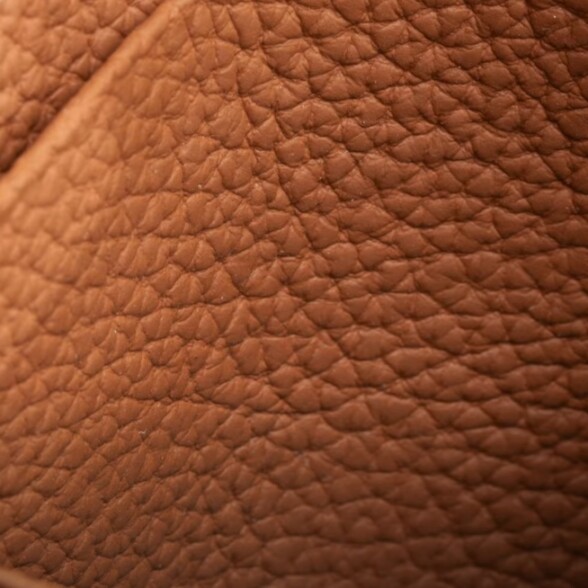
A sign of quality
Unique grain patterns
Because of that, the pattern is unique to each individual skin and hide, and it is not the same. So, if you look at the wallet on the inside, on the outside, you can see their different sizes, and of course, when we cut it, you want it to look uniform and pleasant.
For example, at Fort Belvedere, we use a leather that’s called a Togo leather; and at first a glance, you might think it was debossed but it was not. It is a shrunken calf leather that is really, really nice, and it’s used by other brands like Hermes, for example, to make really nice and expensive wallets and other luxury goods.
The other material that’s typically in a wallet is the interlining, which can be cheap polyester, or it can be something that’s extremely thin, extremely durable, and you can edge treat it in a way that it doesn’t fray, so that can be super helpful. The other thing you need in terms of material is a thread, of course, and you typically want something that is nylon and very resistant, and then you can have the interlinings.
On a cheap wallet, you will get a cheap interlining. It can be sometimes be something like cardboard that, once you bent a corner, will never recover or you can have an interlining that is stiff, that keeps the shape of the leather, but is flexible enough to make it feel very pleasant, which is typically what you get on an expensive wallet.
What’s Inside a $285 Wallet?
Expensive wallets also have certain features—sometimes like RFID blocking technology. Like Fort Belvedere wallets, we added that. It’s a thin layer on the outside to protect your cards from data being stolen. Cheaper wallets may claim to have this technology, too, but I’m not sure how much I trust its ability to work well. Also, in a cheaper wallet, you get this cheap polyester interlining. It sounds very cheap, and it also doesn’t stand the test of time.
Typically, a cheaper wallet won’t tell you much about the leather and where it’s from. On an expensive wallet, they will typically highlight at least what country it’s from. Sometimes, they’ll even share the specific tannery.
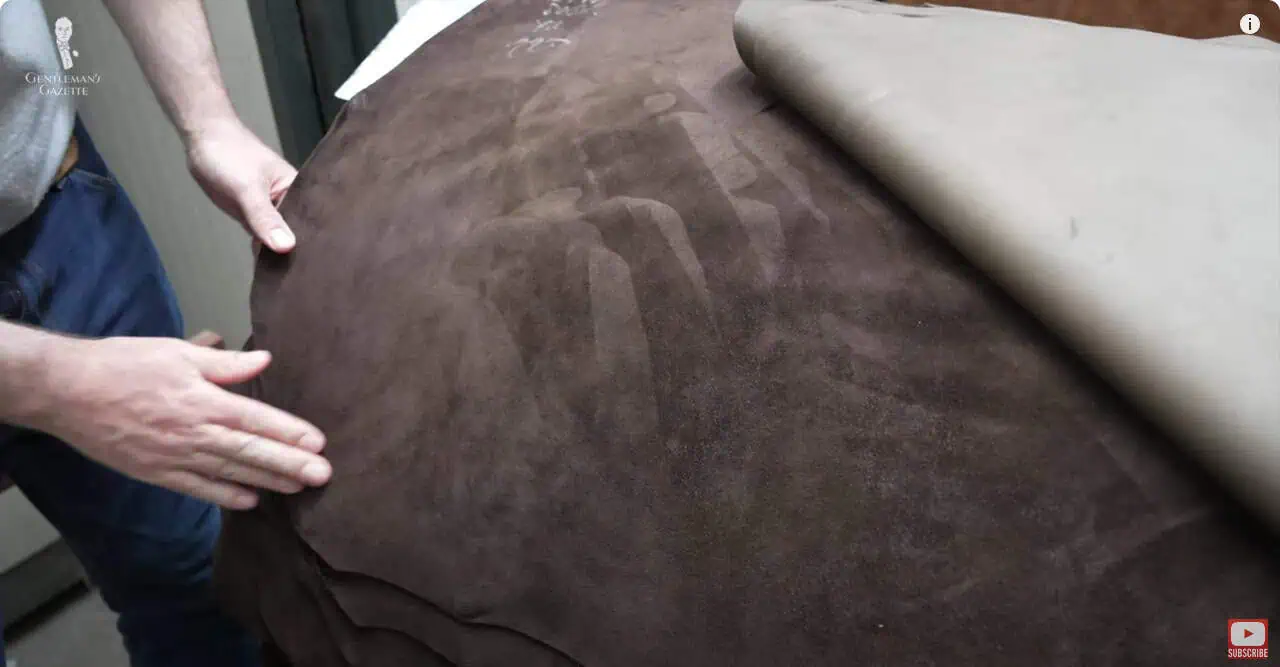
EXPENSIVE WALLETS
The Impact of the Tannery?
Tanneries are typically companies that can do a range of different qualities; and when you buy something, you don’t necessarily know to what level it was tanned or dyed. That being said, a lot of companies focus on a certain segment of the market, so if it’s a well-known tannery, you can expect a higher-quality item.
At Ford Belvedere, when we design a wallet, we want to create something that stands the test of time, so you can wear your wallet for ten, twenty years, or even longer. For that reason, we only choose really high-end, top-notch leather, calf leather, or bull hide leather. We don’t go with cowhide, we want the bull because the quality is better. We don’t have to worry about whether this bull has given birth or not because he simply doesn’t. There’s also other leathers like deerskin, which can be rather soft but, by combining the leather with the right interlining, you can pretty much make most leathers work—at least, if you’re a skilled manufacturer.
When it comes to exotic leathers, cheap wallets may have something that looks like crocodile or alligator or ostrich, but in reality, it’s just a cowhide that is probably split leather, that’s grain corrected, and then embossed. Even if it was full-grain, cow-hide, it’s typically not the best quality on an expensive wallet and that will usually run you in, you know, 6, 7, $800. You get alligator or crocodile, which are protected by CITES, and if you want to learn more about the process and why it’s so expensive, check out this video.
Why Are Crocodile & Alligator Leather Goods So Expensive?
Also a cheap wallet will most likely not be veg tanned because veg tan, in general, is a little more of an expensive process. There are veg tanned leathers which are not great, but there are no veg tanned leathers that really junk.
On the flip side, 99% of all leather is chrome tanned, and there’s a lot of garbage leather that is chrome tanned, but you can also have a high-quality leather that is chrome tanned.
Expensive wallets typically will likely have leathers from renowned European tanneries. Cheaper wallets, on the other hand, will not use those leathers they will typically come from countries like, you know India or China, Brazil, Mexico, Nicaragua, and so forth. In theory, you can make great quality products anywhere, but time and time again, I’ve seen that in areas where they’ve specialized in things for centuries, you’re more likely to get a higher quality output.
A really expensive wallet will sometimes have a lining made of leather, but if you split leather really thin—and for lining you want it to be really thin—sometimes it can lose its integrity and rib and not be durable.

There are certain leathers, like kangaroo leather, which can be split really thinly, and you can add them to really high-end wallets, but those will be very expensive wallets. Also, there are legal issues with it. For example, in the state of California, you can’t import any goods with kangaroo leather. So, if you’re an American company and you want to sell wallets that have a kangaroo lining, you run into issues there. A cheaper wallet will never have a true leather lining because it costs too much, and that’s not something that they can offer. That being said, you can use other materials such as, you know, cotton; you can use polyester; you can use nylon, but, ultimately, you want the function of something that’s really thin and really durable.
At Fort Belvedere, we use as much leather as we can in the wallet, and it’s two-and-a-half times to three times more leather than a regular wallet. Because of that, the whole wallet is more expensive, which makes sense.
So, the more leather you see in the wallet, the higher the chances that it is a high-quality, expensive wallet.
The more lining you see on the inside, the more likely it is to be a cheap wallet. Also, on expensive wallets, you will find leathers that will develop a nice patina and age beautifully over time. Cheap wallets will never have materials that age well and patina well over time. They just look older and worse with use, versus the expensive wallets, which may look better with use.
2. Construction
At first glance, they may all look alike. But, a cheap wallet will have cut edges that are either unfinished or maybe edge painted in certain cases, but that’s about the spectrum that you can expect.
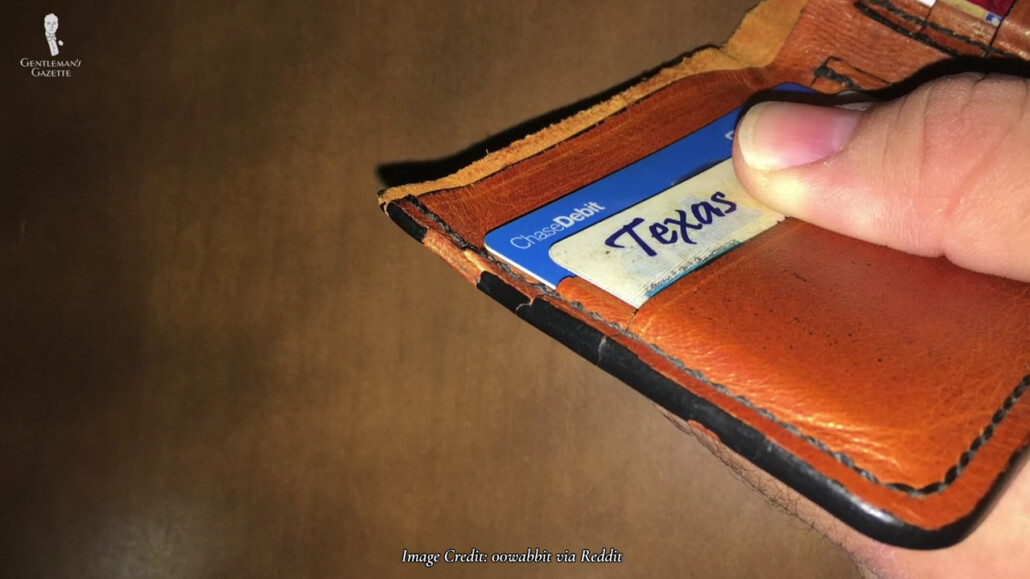
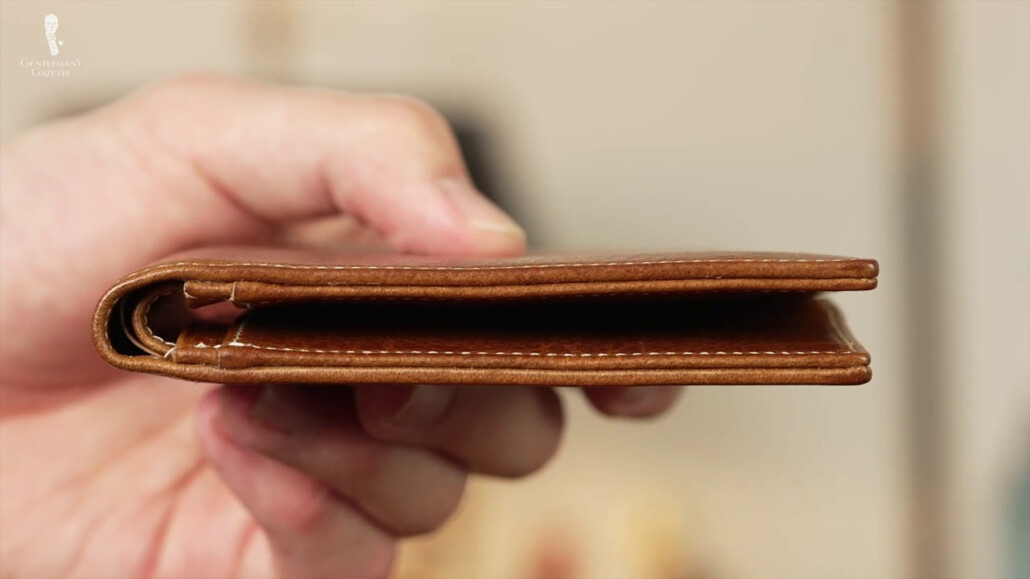
An expensive wallet, if it has cut edges with a veg tanned leather. It will probably be burnished, which is a process that takes a while but it finishes off the pores and it will age nicely. A cheap wallet will have a few layers of edge paint and they will crackle off and look bad over time. An expensive wallet with edge painting will have multiple lay in different colors, and it will wear much differently.
In Fort Belvedere, we even went a step ahead and we did folded edges—not just single-folded edges but double-folded edges. What does that mean? You literally cut and skive the ends of the leather, then you fold them over so you have a full kind of layer of leather that’s touching the outside, and that’s the most durable form of a wallet construction.



To keep prices down, a cheap wallet will often be constructed in a way where the sewing is straightforward and easy, so it can be made in a short amount of time, and the cost can be low. With an expensive wallet, you will get something that’s a little more outside the box, and it’s more difficult to achieve; in reality, if you work in a factory, you typically can train your workers to either focus on the quality and create a quality product, or they can make something cheaply and quickly. But, it’s hard for a factory owner to tell the workers, “Hey, for this client, make it high-end. For this client, just try to pump it through,” because typically, they need very different specializations.
For example—something that may not be very obvious—but if you use contrast stitching in your wallet, you need really skilled artists because, as you sew them with a machine, you just see one side, you can’t see it from the bottom; and if you use a contrast thread, every little mistake is very visible. If you stitch tone-in-tone, it is likely not visible even if you make a mistake. So, on a cheap wallet, you will never see a contrast-tone stitching that is really neat.
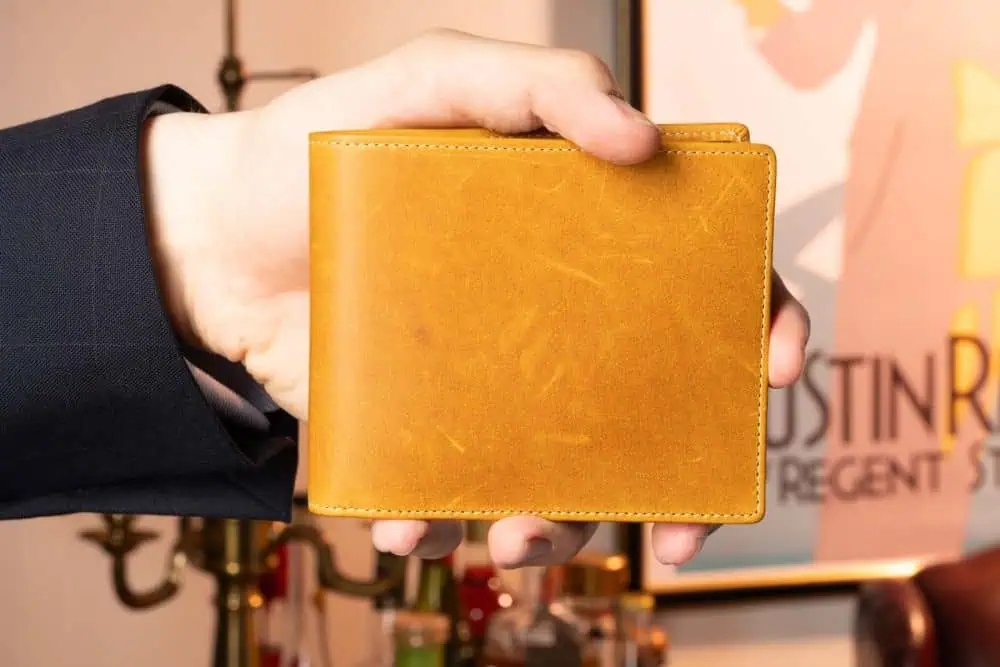
You may see that in an expensive wallet. You may also see tone-in-tone but it’s a slight way where you can distinguish a cheap wallet from an expensive wallet. Also, if you take a look at the workmanship, the more expensive wallet will be super neat. Everything is folded very properly; the leather is cut very precisely.
On a cheaper wallet, as you look there, you can see, “Oh! The stitching is crooked;” you can see the cutting is not very nice; the finishing is not very nice because that’s not the point. They just want to crank out something quickly and inexpensive.
Cheaper wallets will typically also have things like card slots that are just cut into the leather. A more expensive wallet will have dedicated folded edges or edge paint things in more unusual patterns sometimes, too. An expensive wallet will have special features such as RFID, or they will have smart cutouts in a cardholder, for example, so you can push out your cards, and it’s very functional.
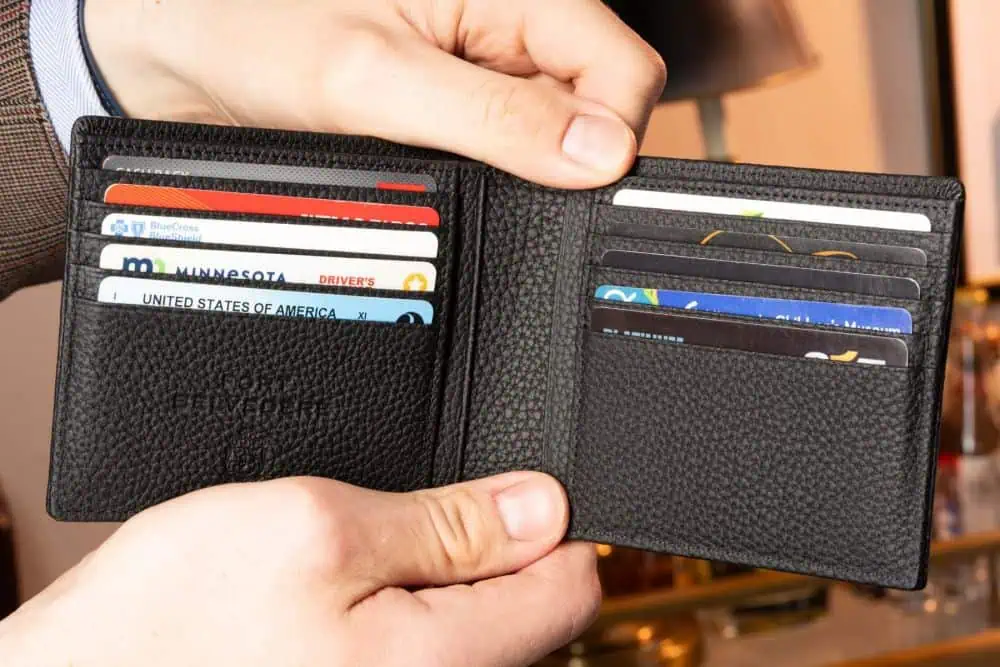
On a cheaper wallet, they may have these features but, often, it’s not as thought through. So, the card slots may be a little too wide or it’s just not very functional. If you invest a lot of money in expensive material, it doesn’t make sense to skimp on a production cost, so you will rarely find a wallet that has really nice leather and very shoddy workmanship. Usually, the quality of materials and the quality of workmanship go hand-in-hand.
3. Durability
How are cheap wallets different from expensive wallets in terms of durability? If you have a cheaper leather that was top-coated and edge-painted in a cheap way, it will age much more quickly, and it won’t look as nice anymore, so you have to throw it away cause you can’t repair it, and then you just have to go and buy another one. So, the cost-per-use, even though the initial price is low, is not super low.
On the flip side, if you get an expensive wallet that might cost five, six, seven times as much as a cheap wallet—because you can wear it, you know, ten years, twenty years versus maybe one or two years on a cheaper wallet—you actually get a lower cost-per-use or cost-per-day, and you have something that feels nice when you have it in your hand, and it will just look more beautiful with a nice patina.
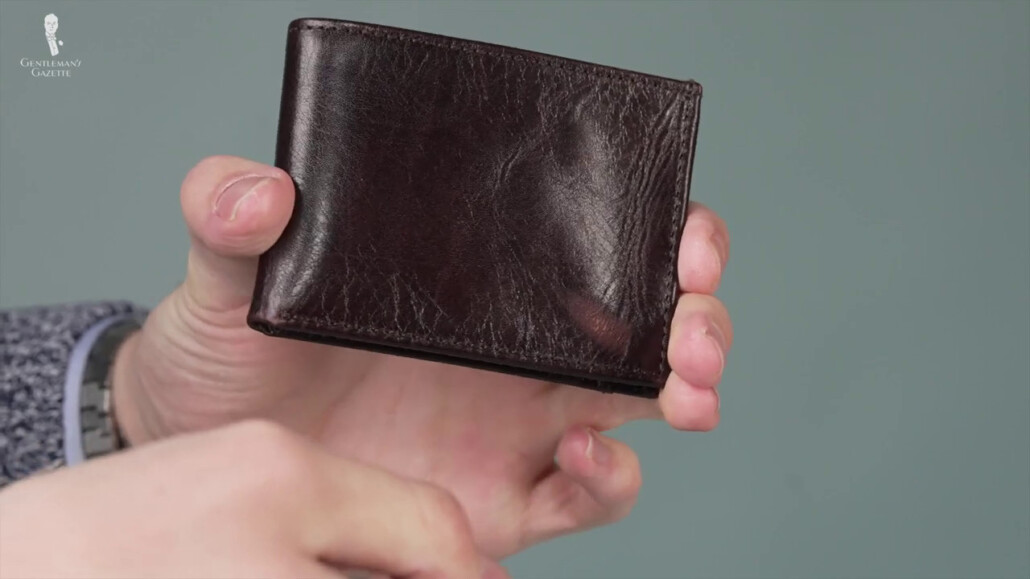
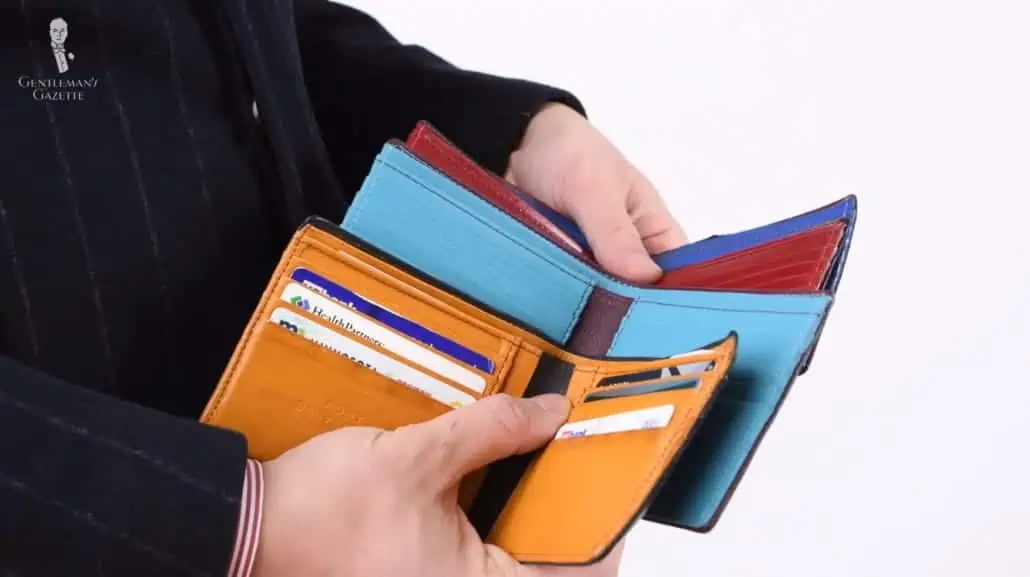
Oftentimes, on a cheaper wallet, they didn’t quite understand what backing material you have to use for this particular leather, and so, it won’t stay in shape as nicely as an expensive wallet, which had paired the leather with the right lining material. There’s a lot of expertise in this that you, as a consumer, will never see, but the manufacturer knows that kind of stuff.
4. Functionality & Design
How are cheap wallets different than expensive wallets when it comes to functionality and design?
So, for a cheap wallet, you typically start out by copying a different design because that doesn’t require any R&D cost. You just take something that’s already there, you knock it off, and there you go—the cheapest way to create your product.
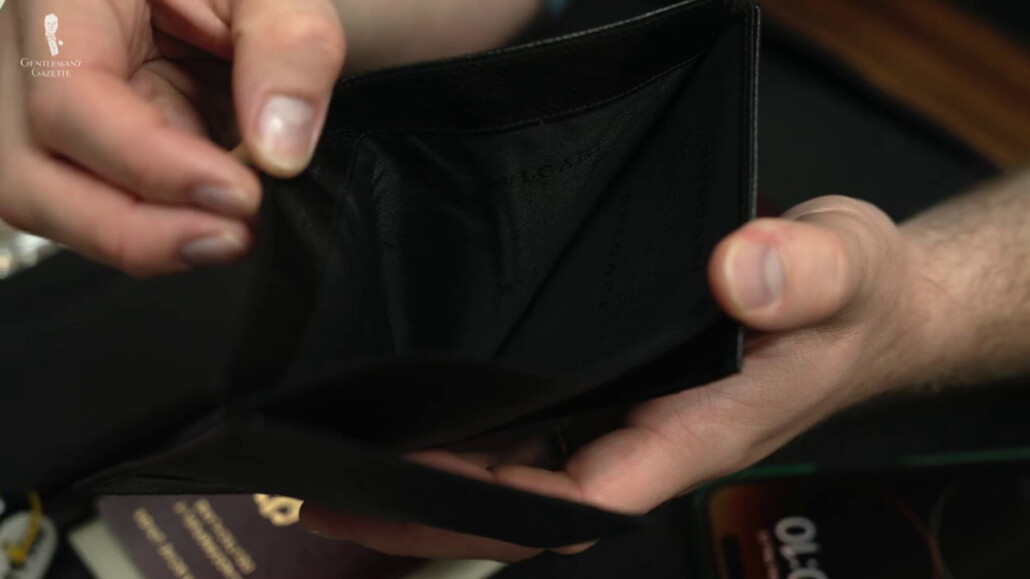
With expensive products, you have the ability to actually say, “Well, what is the function that we want? Do we want this wallet to be super thin? Do we want it to hold lots of cards? Do we want it to have a lot of leather?” What is it that you want, you can design a wallet accordingly. Not all companies that sell expensive wallets do that but, at least, there’s a possibility for that. For the same reason, we chose the exact right radius for the corners so it looks as square as possible, but with the right radius, it just doesn’t catch on anything, and it’s very functional.
On a cheaper wallet, you don’t have that level of design and R&D in a product, so it will just be more clunky and every time you put it into your pocket, it will be hard to get it out and you just have to deal with that. Also, the cheaper the wallet, the more plastic items you will see in it. Sometimes, it can be like a plastic ID window, but I found that, typically, you can never actually see the ID through these so you have to take the card out anyways, and often this is the material that will crack the soonest and age most quickly.
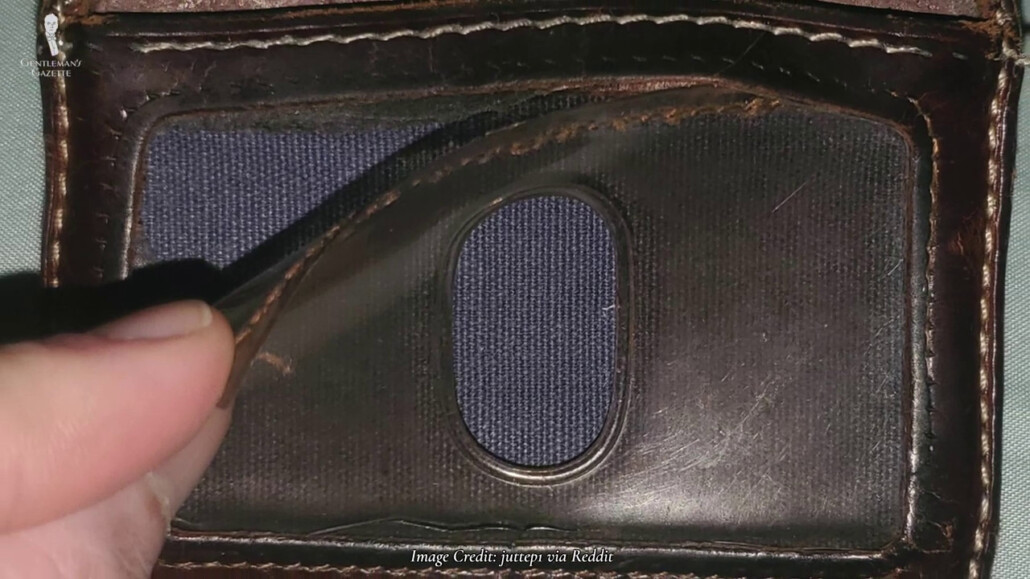
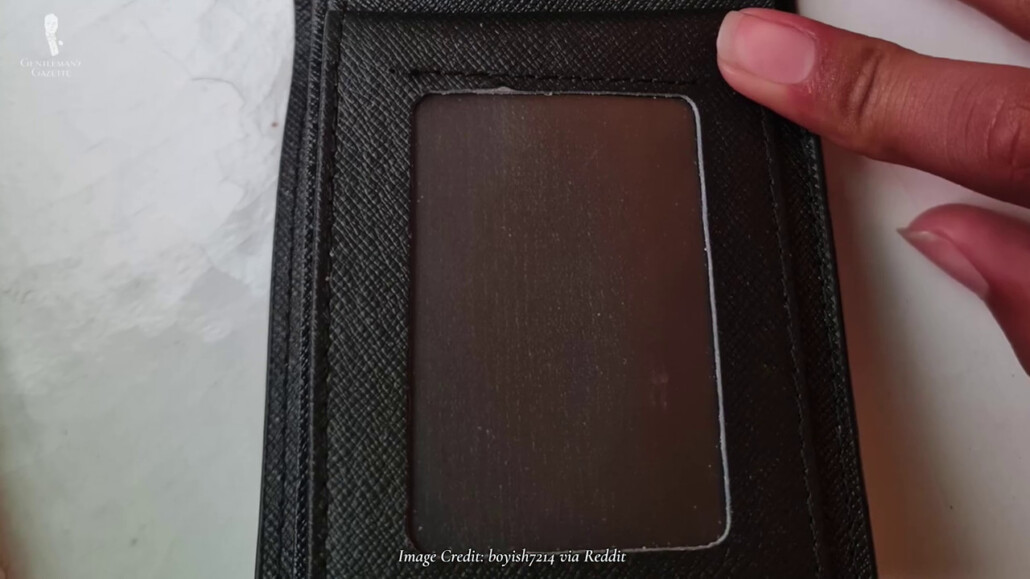
So, on a more expensive wallet, you will likely not see any cheap ID windows. It’s typically all quality leather.
Also, on cheaper wallets, you typically get a bulkier your wallet because the materials are not as good, they can’t be split as thinly, and they may have extra compartments—a trifold, a zipper pocket—and realistically, if someone steals your wallet, they will probably take your whole wallet. A zipper pocket will not protect you in any way.
Sometimes, also the product isn’t maybe designed for the right market. I grew up in Germany, and there, most men have a bifold wallet with a coin purse because you have coins with a higher domination, so it somewhat makes sense. In the US, you don’t have coins of high value in general circulation and so people generally do not have a coin purse. So, you just take the product with a coin purse and offered in the US, that’s just not useful.
So, cheap wallets are typically just knocked off in their design; there’s nothing original to them. Expensive wallets usually have more useful features, and you get a product that is more thought out.
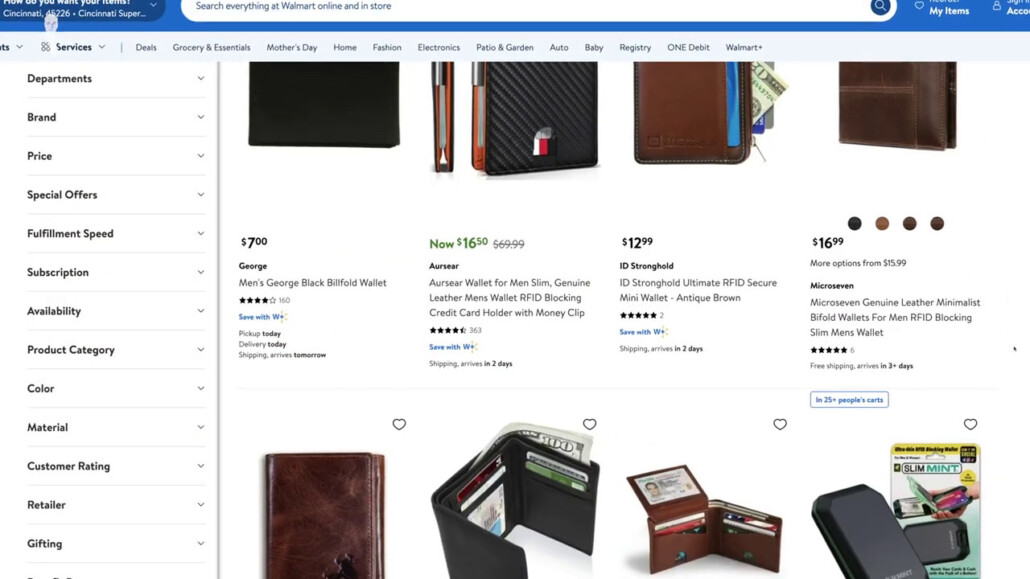
5. Style
When it comes to style, cheaper wallets can often be more trendy and fashion forward, whereas expensive wallets are often very classic and more timeless.
6. Product Testing
One thing that is often overlooked with wallets is the degree of product testing and to make sure the materials are really really good and do what they’re supposed to do.
With a cheaper wallet, often times, that’s not the case and, sometimes, they get something wrong and then they can’t sell it and have to throw away the entire batch. If you have high labor costs and high material costs, mistakes like that would be even more costly, so typically, a higher-end wallet brand will do more testing and ensure that their product stands up to everyday use.
At Fort Belvedere, for example, I know before we produced a first wallets, we had like a total of 30 prototypes, right? Different colors, different leathers; and I remember the first leather that we really loved and touched, it felt great, it looked great, it smelled great, but once we used it as a wallet, over time we noticed that it developed kind of a hazy patina and it really didn’t look nice anymore so we didn’t want that, so we didn’t bring this product to production.
If we had been a cheaper company and we just wanted to pump something out that looks good on the first day, we would have gone with that, the customer would have gotten exactly what they wanted, but over time, they would have gotten this hazy piece of leather wallet, and they would have said, “Well, what is that,” right?
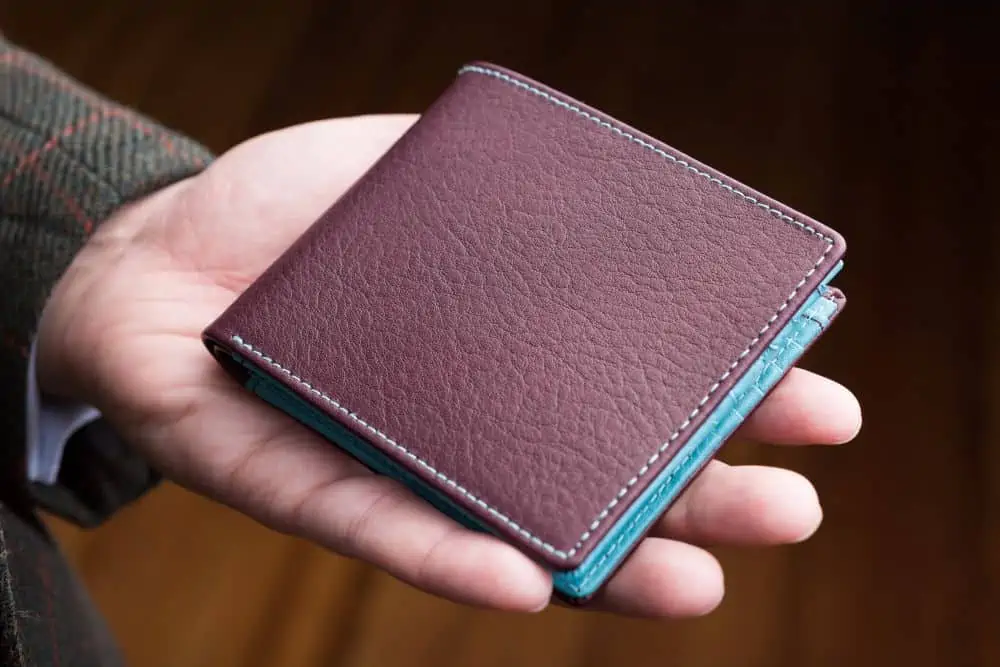
Conclusion
So, when you buy a more expensive wallet, you ideally get a higher quality product that has been tested so you know you get something good. But, again, buyer beware, there are lots of luxury brands out there that have kind of deteriorated their product to a point where you really get a, you know, sub-par, below-average product at an extremely high price point.
So, how can you protect yourself from that? Look at the hallmarks, look for the aniline-dyed leather from European tanneries, look for the folded edges, check how much leather they use, see if they are slimmer, if they have certain features that are really good, if there’s RFID blocking, really dive deep into the product to understand what it is that you really get.
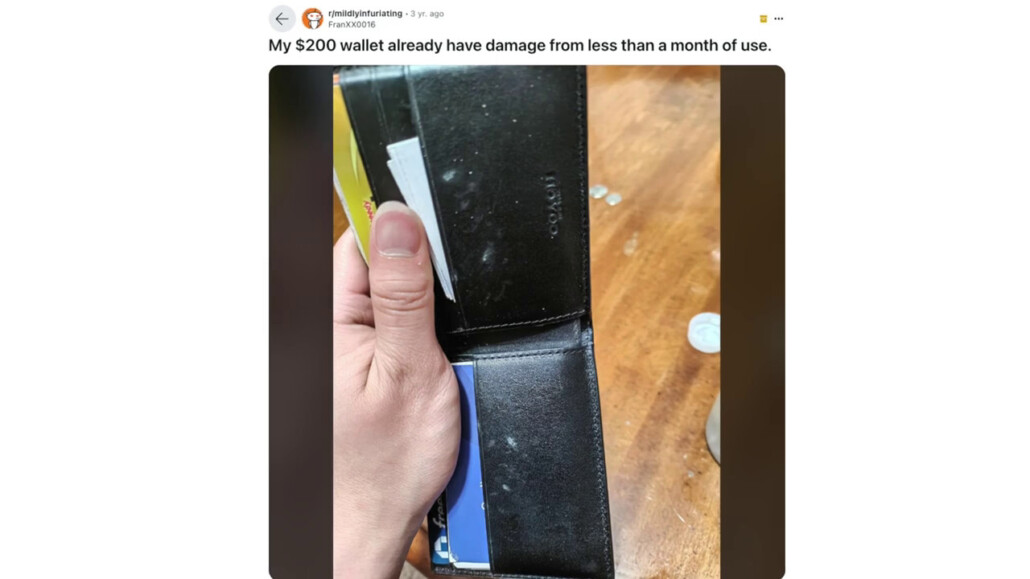
At the end of the day, buying one wallet that lasts you twenty years is a much greener and much more sustainable solution than buying a new wallet every year or every two years. An expensive wallet made of high-quality material will look better over time, it will develop a patina, it will have a nice function, and, overall, at the end of the day, we’ll have a lower cost-per-use compared to a cheaper, inexpensive wallet.
What methods do you use to identify a cheap or expensive wallet? Please share your tips in the comments.
FAQ
What are the main differences between cheap and expensive wallets?
The main differences between cheap and expensive wallets lie in their quality, materials used, craftsmanship, durability, and functionality. Cheap wallets generally have lower quality materials and construction compared to expensive wallets. They may be made from synthetic materials or low-grade leather, which can affect their longevity and appearance.
Is it worth it to buy a more expensive wallet?
If you use your wallet every day and carry it with you, it is likely to be subjected to considerable wear-and-tear and you’ll be using it constantly. The improved durability and functionality of a genuinely well-made wallet has an intrinsic cost, and it is often worth it to pay that cost for a product that will last longer and be easier to use.
Are expensive wallets more durable than cheap ones?
Yes, expensive wallets tend to be more durable due to their higher-quality materials and superior craftsmanship. They are often designed to withstand everyday wear and tear, ensuring a longer lifespan.
Do cheap wallets offer the same functionality as expensive ones?
Cheap wallets may lack certain features and organization options that expensive wallets provide. Special features, when present, are often poorly throughout and implemented. Expensive wallets have features that are genuinely helpful and functional properly.
Is vegetable tanning always better than chrome tanning?
No, it is not. While cheap leather is almost always chrome tanned, there are chrome-tanning processes that can work very well with quality leather. What matters is that the tanning process is a good fit for the leather and the eventual way that it will be employed.
Do luxury brands make the best expensive wallets?
No, they do not. Oftentimes, wallets from high-end fashion houses have similar quality standards to lower quality wallets, but their prices are inflated by branding. Names like Gucci, Hermes, Balenciaga, and Burberry command attention and have a certain value all their own, even if the wallets that bear that logo aren’t necessarily of higher quality.
Can cheap wallets still be stylish?
While cheap wallets may not always offer the same level of style and elegance as expensive ones, there are affordable options available that can still be visually appealing. It ultimately depends on personal preferences and individual budget constraints.
Are the best wallets made from exotic leathers?
Not necessarily. While wallets made from exotic leathers like crocodile or ostrich leather are often higher quality, because of the initial investment made in the luxurious materials, there are many types of leather that are high quality without being exotic, such as calf-skin leather. While a quality wallet is almost always made from quality leather, not all quality leather has to be exotic.
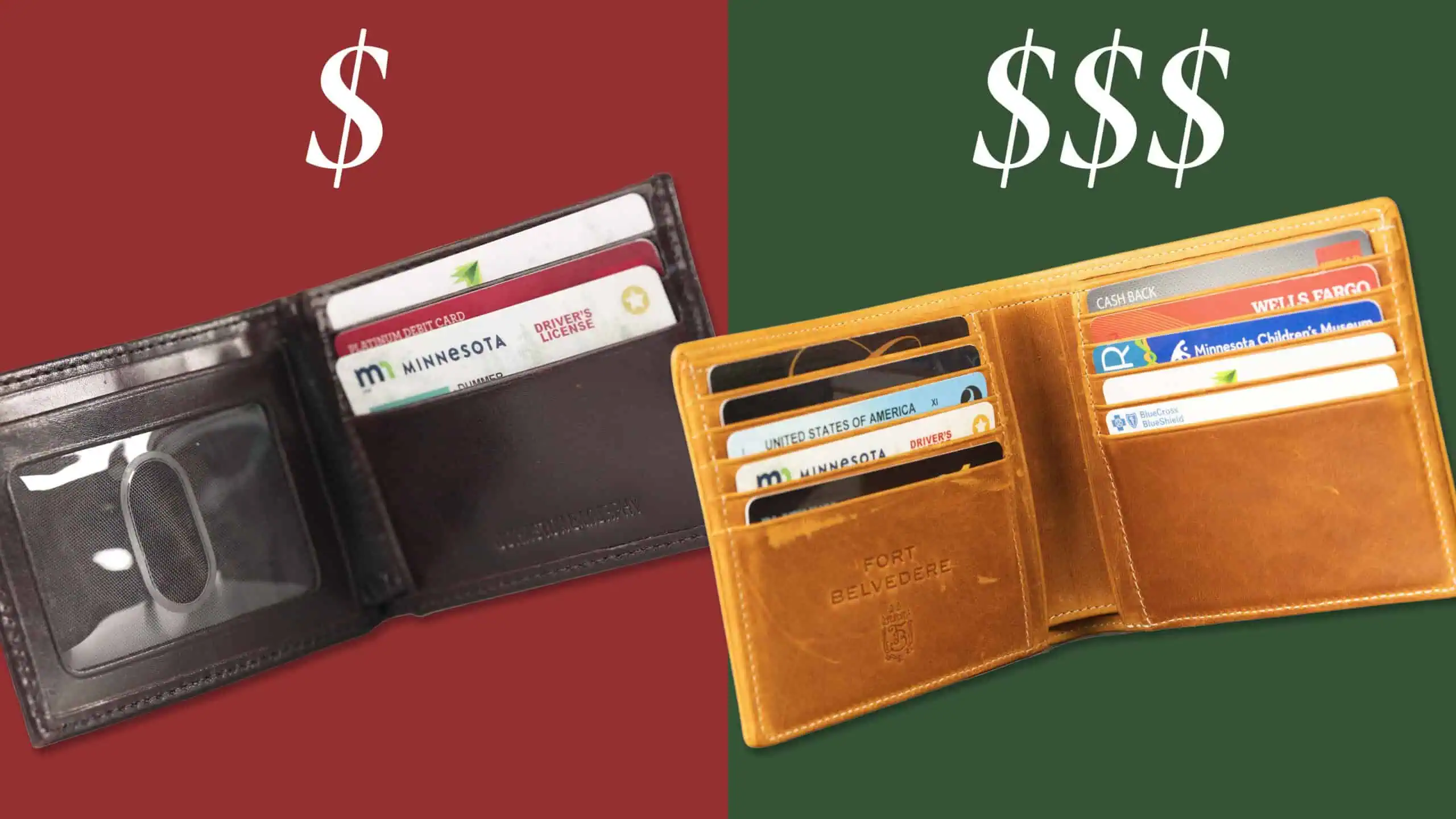

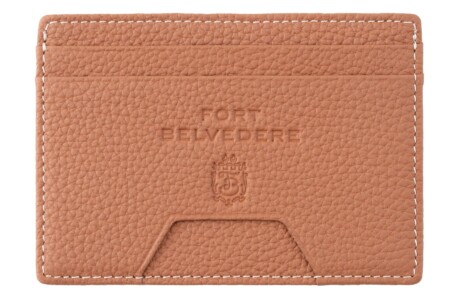

I bought a Belvedere wallet a few years ago and the stitching is coming out and cards tend to stick in some of the pockets.
Hi David, which model did you buy?
I have a coat wallet by ETTINGER, London for many years and I’m very happy with it. It’s worth the price.
Glad to hear you’ve enjoyed your coat wallet, Matthias – we’re thinking about adding a coat wallet to our line-up. What features do you like/dislike about your Ettinger wallet?
This was a bit too much of “buy our brand”. RFID blocking as quality signal? Really?
Quality leather can be felt by touch. My Aigner wallet is almost 15years old and gets better from day to day.
We’re very proud of the wallets we’ve produced, which is why we’re happy to use them as an example of high quality. I certainly agree that high quality leather can be felt by touch – with so many brands on the market purporting to be high quality when they are not, it felt important to demonstrate to others how you can determine what an exquisite leather wallet looks and feels like.
I had a black alligator wallet made by Equus Leather in England during the pandemic. It took a long time to be made because of that. I love it. Best wallet that I’ve ever bought. I saved a lot of money because no V.A.T. living in the USA, I keep it in my front pants pocket.
. Spend the money and get quality with everything that you buy.
I know this presentation is specific to high-quality leather wallets, but sometimes a low-cost and indestructible alternative is needed. I enthusiastically recommend the 100% US-made (Maine) wallet from Hyperlite Mountain Gear to fill that need. I purchased mine at least 5 years ago and it shows no discernible wear. The material is waterproof Dyneema fabric which is 15 times stronger than steel. My backpacking tent (also from Hyperlite) is made from that material. The wallet costs <$50. I have no commercial affiliation with the company. Products and customer service are entirely first class.